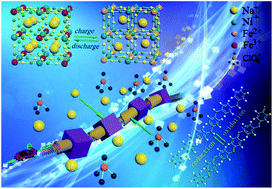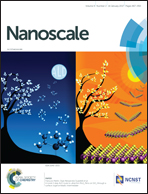A string of nickel hexacyanoferrate nanocubes coaxially grown on a CNT@bipolar conducting polymer as a high-performance cathode material for sodium-ion batteries†
Abstract
The development of suitable cathode materials for sodium-ion batteries is the key issue to realize their large-scale applications owing to the lack of appropriate materials with adequate electrochemical capacity and reversibility for Na-ion insertion reaction. Here, a string of nickel hexacyanoferrate (NiHCF) nanocubes is coaxially grown on a CNT@bipolar conducting polymer (BCP) by a facile electrochemical route, and used as a high-performance cathode material for sodium-ion batteries. The obtained cathode shows a surprisingly high specific capacity of 194 mA h g−1 upon the initial discharge, a good cycling performance and excellent rate performance. It is considered that the unique nanostructure not only effectively facilitates the electrode/electrolyte interaction and the electronic and ionic transportation but also exerts a synergistic effect between the BCP and NiHCF nanocubes to trigger the kinetics of the electron and ion transport. It is expected that such a promising environmentally friendly alternative cathode material can be widely applied for sodium-ion batteries (SIBs).



 Please wait while we load your content...
Please wait while we load your content...